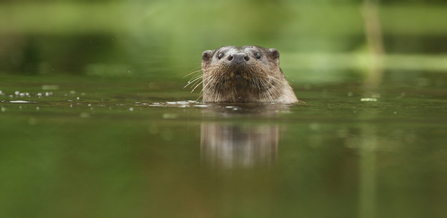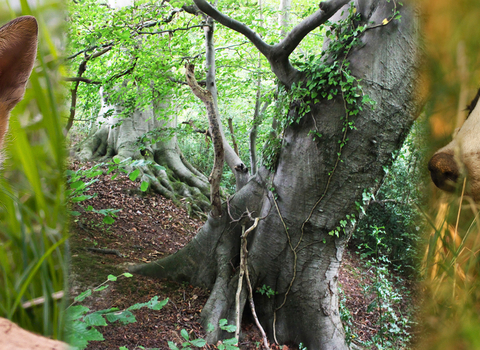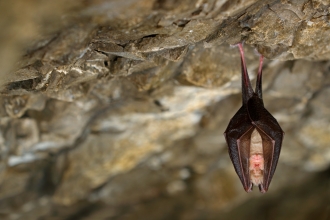Thank you to everyone who took part in our e-action to have the ‘Red Route’ removed as an ‘aspiration’ in the draft North Wales Regional Transport Plan. Over 1,000 responses were submitted to the public consultation!
These submissions will inform a Consultation Report currently being prepared for the North Wales Corporate Joint Committee (NWCJC), which is responsible for producing the final Regional Transport Plan. The NWCJC’s aim is for this Plan to gain Ministerial approval by the end of September 2025. We shall keep you all informed of any developments via this web page and our other communication channels.
The submission from the North Wales Wildlife Trust and our partners in this campaign, Stamp Out The Red Route, can be downloaded via the link below.
Keeping up the pressure
We encourage you all to raise this important issue with your local Members of the Senedd (MS) so that together we can stop the Red Route re-emerging as a threat to our wildlife and environment.
We've put together some handy tips, guidance, and support on how to contact your MS or MP to counter threats to wildlife here:
Please feel free to use our letter to inform your response.
More about the Red Route
The 13km ‘Red Route’ highway proposal in North East Wales (A494/A55/Flintshire Corridor) would destroy ancient woodlands, wildflower meadows, and centuries-old hedgerows, while endangering species such as otters, bats, barn owls, and badgers. Were this development to proceed, it would be by far the largest new highway proposal in the whole of Wales and the most potentially damaging.
What wildlife would be impacted by the Red Route?
The 13 km dual carriageway would plough through the Leadbrook ancient woodland, including very rare wet woodland habitat. Ancient woodlands are those which have remained uncleared for centuries, classified by the Welsh Government as an “irreplaceable habitat”. Wildflower meadows and centuries-old hedgerows would also be destroyed, as well as the homes of rare species, such as otters, badgers, barn owls and bats.
How much would the Red Route cost?
Incredibly, it has emerged that a consortium of six North Wales local authorities who have put the Red Route back into their draft North Wales Regional Transport Plan would be expected to pay for the Red Route, even though the £507m project impacts only one of the six local authorities..
The Route of the Red Route: (opens a PDF from Wales Government website)
The estimated cost has already spiralled out of control; the last Government budget update in 2019, estimated the cost of the Red Route as £300m. The cost, if the Red Route was to proceed now, would be a staggering £507m, an increase of £207m or 70%! Even these astronomical sums are probably an underestimate because, for example, they don’t include the huge traffic management cost of keeping the existing road open to traffic over the very disruptive 3-year construction programme. It is estimated that this 13 km dual carriageway could cost every single household in North Wales approximately £1,770!
The Red Route would need the estimated equivalent of 33% of the entire combined annual budget of the North Wales Regional Transport Plan consortium of local authorities consisting of Ynys Môn, Gwynedd, Conwy County Borough, Denbighshire and Wrexham County Borough to subsidise the construction of this single project in Flintshire!
Could other measures reduce congestion in the vicinity?
A combination of enhanced public transport and support for active travel, coupled with "online" improvements to the existing highway network, and SMART solutions (for example, remote real-time signage and traffic advice) would very markedly reduce any congestion in the area. Demographic changes in North Wales, the dramatic rise in working from home, and the recent large falls in car-borne tourism in North Wales will further reduce the need for the Red Route dual carriageway.
Also, this proposal for a review runs counter to the remit of the Regional Transport plan, which is supposed to focus on making the best use of existing transport infrastructure; improving access to public transport; encouraging people to walk, cycle or wheel more often; and be consistent with Llwybr Newydd, the Wales Transport Strategy (which it is not).
Would the Red Route damage our fight against climate change?
Yes. Estimates of the extra carbon emissions from the new dual carriageway which would result from its construction and maintenance, and increased traffic volumes it would attract, would be approximately 263,000 tonnes of carbon over its life. You would have to fly between London and New York over 300,000 times to emit this quantity of carbon into the atmosphere - that’s nearly half of all journeys made in a year between London and New York - to equal the impact of this proposed 13km of dual carriageway.

Otter_Luke Massey2020Vision
Otters at Leadbrook Ancient woodland!
Felix Hodgkinson, whose grandfather's farm and woodland would be devastated by the highway, captured footage of an otter on the Lead Brook that runs through the woodland threatened by the proposed road development. This special and beautiful animal is known to be vulnerable to road deaths and its habitat would be severely harmed if the road proposal is not stopped.
What wildlife is under threat?
Leadbrook woods and meadows are home to a wide range of plants and animals including otter, owls and bats.




